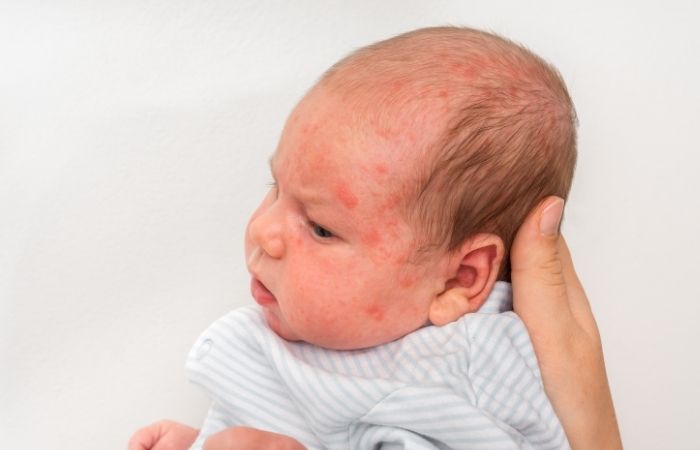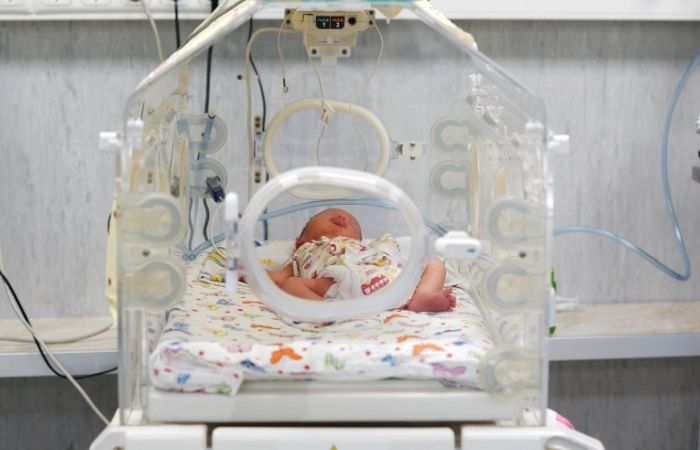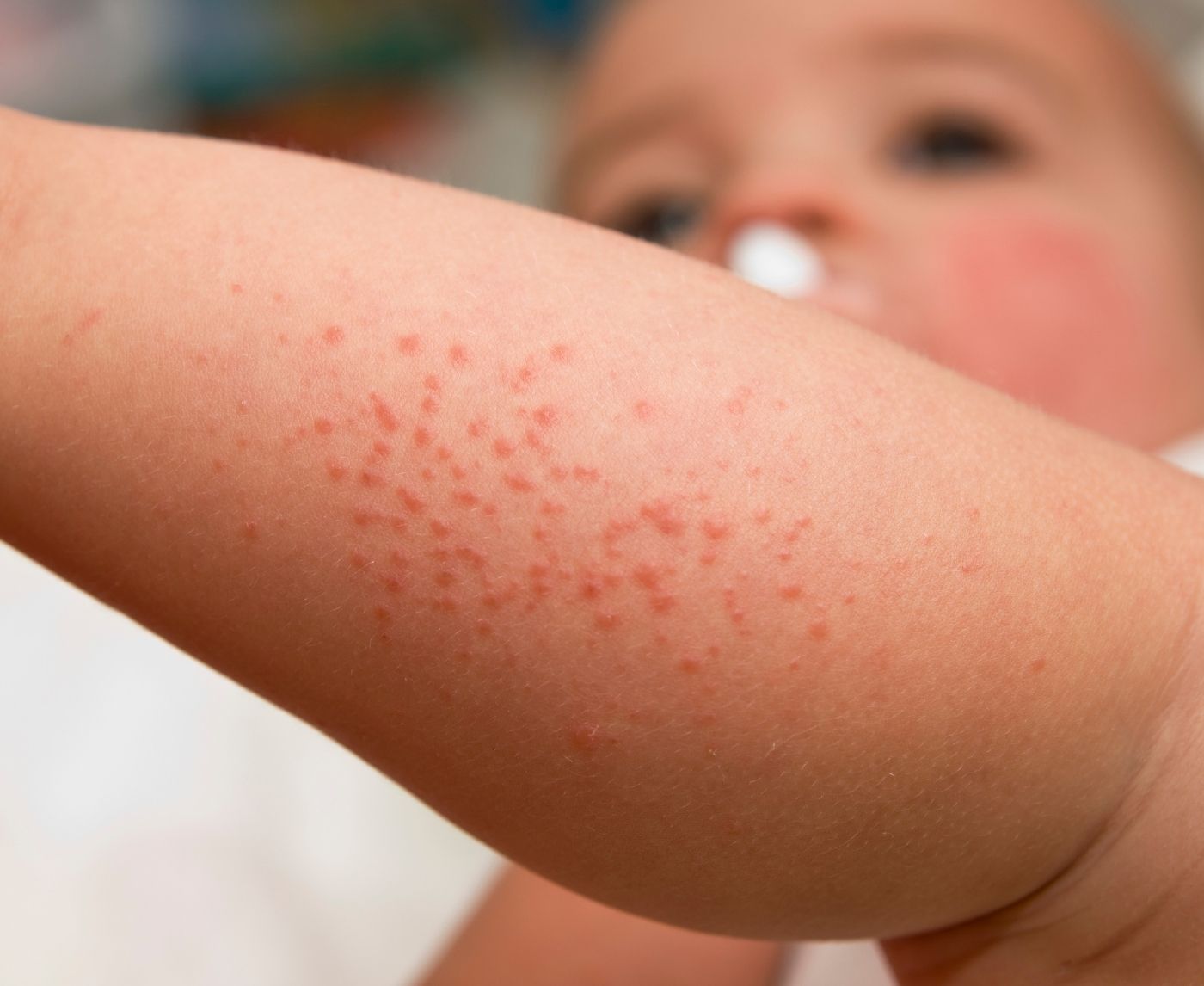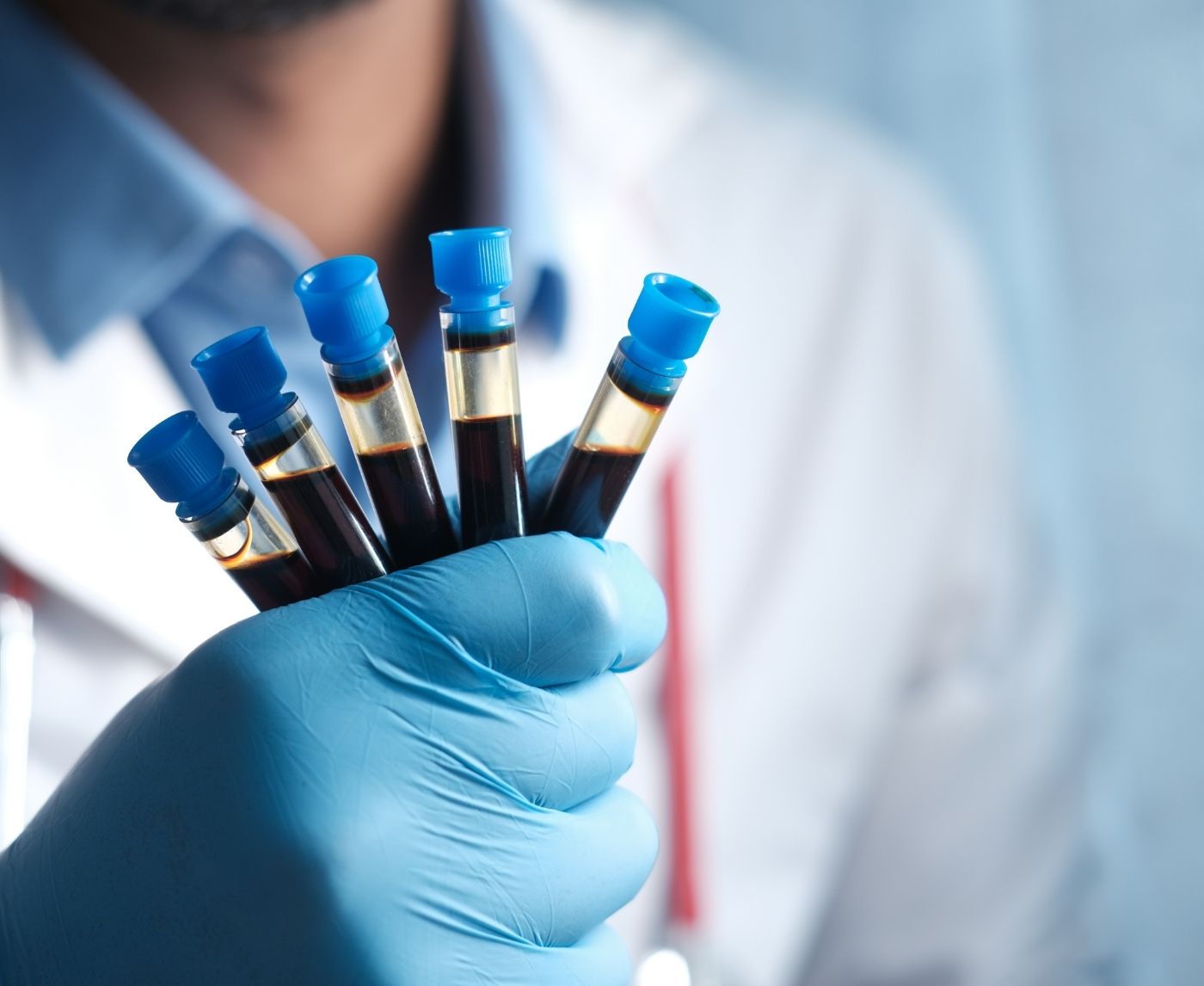How Soon After Sex Can You Test for HSV-1 or HSV-2?
Quick Answer: Congenital syphilis in newborns can look like diaper rash, eczema, or a common cold, with rashes on the palms and soles, nasal “snuffles,” poor feeding, or bone pain. Many cases are missed because symptoms mimic harmless baby issues, but testing reveals the truth.
When a Rash Isn’t Just a Rash
At first, it was just a rash. Tiny red spots across her newborn’s bottom, the kind of thing every baby book says is normal.
“I thought it was diaper rash,” Elena, 25, told me. “The nurse even said it was probably irritation from wipes. But then it spread to her palms. Her nose started running this weird yellow stuff. She stopped feeding. That’s when I knew something was really wrong.”
Elena’s daughter had congenital syphilis, a disease many parents believe was wiped out decades ago. She hadn’t done anything “reckless” or “irresponsible.” She’d gone to her prenatal appointments, tested negative early in pregnancy, and trusted the process. But syphilis doesn’t play fair. It can hide. It can sneak past one test. And it can pass silently from parent to baby.
Parents spend the first weeks of a baby’s life decoding every mark, every cry, every sniffle. A rash is almost always chalked up to heat, diapers, allergies, or sensitive skin. But syphilis rashes don’t follow the same rules. They can show up on unusual spots, like the soles of the feet or palms of the hands. They can be scaly, flat, or blistered. Sometimes they fade, only to come back again weeks later. They don’t behave like typical baby skin irritations.
Antonio, 31, remembers bringing his son to the pediatrician three times before anyone took the rash seriously.
“They told me it was eczema, then ringworm, then some kind of virus. By the time the labs came back, he had swollen joints. Watching him cry when I tried to pick him up broke me. I didn’t even know that was possible in a baby.”
This is why congenital syphilis has earned the nickname “the great imitator.” It masquerades as everyday baby problems until something more alarming pushes families into emergency care. And by then, the damage can already be underway.

People are also reading: Condoms Cover Genitals, Not Everything Else: The Skin-to-Skin STD Problem
The Symptom Story No One Warns Parents About
Congenital syphilis doesn’t come with a flashing red warning sign. Some babies look perfectly healthy at birth, only to start showing symptoms weeks or months later. Others are born sick from day one. What it looks like depends on when during pregnancy the infection crossed the placenta and how advanced it was when the baby arrived.
The first signs can include unusual rashes, but also:
A baby who sounds congested but isn’t fighting a cold. Doctors call it “snuffles,” a persistent, thick, sometimes bloody nasal discharge caused by syphilis bacteria. A newborn who struggles to gain weight, no matter how often you feed. Or a baby who suddenly refuses to move an arm or leg, as if even tiny movements cause pain.
It’s terrifying to see, but also confusing, because each of those symptoms on its own could be explained away. That’s how syphilis hides in plain sight.
Nadia, 22, told me her daughter’s symptoms were dismissed as reflux and a milk allergy for weeks.
“She vomited after every feeding. She lost weight. I thought it was my fault, that I wasn’t making enough milk. Then they did blood tests. When the doctor said the word ‘syphilis,’ I froze. I didn’t even know babies could get STDs.”
Congenital syphilis isn’t rare anymore. In fact, it’s on the rise. According to the CDC, over 3,700 babies in the U.S. were born with it in 2022, a jump of 755% compared to a decade earlier. That’s not a typo. That’s thousands of babies whose parents likely did everything they thought they were supposed to do.
So why does it keep happening? Because the system assumes a single test is enough. Most pregnant people are tested once in the first trimester. But if you test negative in month three and contract syphilis in month five, there’s no guarantee anyone will check again. Unless you’re labeled “high risk,” retesting often doesn’t happen. That gap leaves babies vulnerable.
A study in JAMA Pediatrics found that over 50% of congenital syphilis cases could have been prevented with third-trimester testing and timely treatment. That’s not about parents making bad choices, it’s about a medical culture that doesn’t prioritize comprehensive, stigma-free care.
And let’s not ignore stigma. Too many parents feel too embarrassed to ask for another test. Some don’t want to admit to having a new partner during pregnancy. Others fear being judged by providers. This silence is deadly. Shame is not prevention. Testing is.
When Silence Becomes a Symptom
Silence shows up in different ways. It’s the provider who doesn’t mention congenital syphilis because they assume it’s “a thing of the past.” It’s the parent who doesn’t push for answers because they’re terrified of what the answers might mean. It’s the family who whispers “STD” like it’s a curse word, instead of a medical condition.
“I almost didn’t go back,” Leah, 28, admitted. “My baby’s nose wouldn’t stop running this yellow stuff, but I didn’t want them to think I was dirty. When the ER doctor finally said it was syphilis, I broke down, not just from fear for my baby, but from the shame I’d been carrying around.”
That shame isn’t natural. It’s taught. And it’s one of the biggest barriers to preventing congenital syphilis. If we shifted the story, from “you did something wrong” to “let’s keep your baby safe”, we’d save lives. We’d also save parents from the crushing guilt of blaming themselves for something they were never told to watch out for.
Every new parent knows babies get congested. Their little noses clog easily, they sneeze, they sound stuffy even when they’re fine. So when a baby starts sniffling, most parents think: cold, allergies, maybe the air’s too dry. But in congenital syphilis, that runny nose, known as “snuffles”, isn’t mucus. It’s a thick, sometimes blood-streaked discharge packed with bacteria. It can spread the infection to caregivers too, through simple contact.
Angela, 30, remembers lying awake listening to her newborn wheeze:
“She sounded like she couldn’t breathe. The pediatrician said it was probably bronchiolitis. I kept suctioning her nose, but it wouldn’t clear. Then one morning, I saw blood in the tissue. That’s when we rushed back. I’ll never forget the look on the doctor’s face when she came back with the test results.”
Angela’s daughter survived after a 10-day course of IV antibiotics, but the delay meant extra monitoring and weeks in the hospital. Stories like hers are common, parents doing their best, doctors missing the signs, the infection advancing quietly until it screams for attention.
Part of the reason congenital syphilis is so often missed is that its early signs overlap with conditions parents and providers see all the time. A scaly rash on the scalp might look like cradle cap. Irritated skin folds could pass for diaper rash. A baby’s fussiness could be chalked up to colic or reflux. The danger lies in how easily these mislabels delay real diagnosis.
Take Jorge and Marisol, first-time parents in Texas. Their son’s rash started as a faint pink flush on his torso. Their pediatrician suggested a new laundry detergent might be to blame. Weeks later, when the rash spread to his palms and he developed swelling in his belly, a blood test finally revealed the truth: congenital syphilis.
“I went from thinking we just needed gentler soap,” Marisol said, “to wondering if our baby would even survive.”
This is the cruel trick syphilis plays. It hides in plain sight, dressed as eczema, colds, teething, even picky eating. And unless someone thinks to test, it keeps advancing.

People are also reading: Probiotics vs. STDs: Myth or Microbiome Magic?
The Numbers Tell a Story Too
Here’s what the data says: congenital syphilis is climbing fast. The CDC reported 3,755 cases in 2022, the highest in decades. That’s more than quadruple the number from 2012. In California alone, congenital syphilis cases rose 900% in the last decade. Behind those statistics are real babies, real families, and real suffering.
Peer-reviewed studies confirm what public health experts already know: these infections are preventable. One NIH study found that the majority of cases happened in parents who received some prenatal care, but either weren’t re-tested in the third trimester or didn’t receive timely treatment. In other words: most of these babies didn’t have to get sick.
And yet here we are. Why? Because stigma keeps people from asking for tests. Because providers underestimate risks. Because we still talk about syphilis like it’s a relic of the past. The numbers prove otherwise.
Myth: “Syphilis is an old disease that doesn’t exist anymore.”
Reality: Congenital syphilis is at a modern high, and cases are still rising. Thinking it’s gone is exactly why parents and doctors miss it.
Myth: “If I tested once in pregnancy, I’m safe.”
Reality: Infection can happen any time during pregnancy. A negative test at 12 weeks doesn’t protect you at 30 weeks. Retesting is the only way to be sure.
Myth: “Only certain people get syphilis.”
Reality: Syphilis doesn’t care about your income, sexuality, monogamy, or whether you planned your pregnancy. It affects everyone. The only thing that matters is exposure and testing.
Myth: “I’d know if I had syphilis because I’d see sores.”
Reality: Many people never notice symptoms. Sores can be hidden, painless, or heal on their own. But the bacteria stay in your system, ready to pass on to your baby.
Finding the Words When You Feel Tongue-Tied
Asking a doctor for another STD test while you’re pregnant, or after your baby is born, can feel like walking into a confessional. Some parents freeze, convinced the provider will side-eye them or silently judge their choices. But asking for testing isn’t a confession. It’s an act of care. It’s saying: “I want to protect my child.” Nothing about that deserves shame.
Martha, 24, shared how her doctor dismissed her concerns: “I told her my baby’s rash didn’t look like normal diaper rash. She said I was overanxious and told me to relax. But I couldn’t. I asked for a syphilis test. She sighed and finally ordered it. Two days later, she called me crying. I was right.” Martha’s persistence saved her baby’s health. But she shouldn’t have had to fight that hard.
If you’re struggling to find the words, try this: “I’d like to be re-tested for syphilis, just to rule it out.” Or, “My baby has symptoms that worry me, and I want congenital syphilis ruled out.” You don’t need to explain your sex life, your partners, or your fears. You don’t owe anyone an apology for wanting to keep your baby safe.
Testing for syphilis is simple: a blood draw or a finger-prick test. That’s it. No invasive exams, no complicated prep. If you’re positive during pregnancy, the treatment is usually one or more shots of penicillin, a drug that’s safe in pregnancy and highly effective at curing syphilis. If your baby is infected, doctors typically prescribe a 10-day course of IV antibiotics in the hospital. It sounds intense, but babies are resilient. Many recover fully when treatment starts early.
“I couldn’t believe it was just one shot,” Bella, 32, recalled.
“All that fear, all that guilt, and the solution was penicillin. My son had to stay in the hospital for antibiotics, but now he’s thriving. He’s two years old, running around like nothing ever happened.” Her story is proof that syphilis isn’t a death sentence. It’s a challenge that can be met, with medicine, with advocacy, with love.
Sex-Positive Parenting Is Preventive Care
Let’s talk prevention without shame. Syphilis doesn’t happen because someone is dirty or reckless. It happens because people are human, curious, sexual, sometimes unprotected, sometimes trusting partners who weren’t honest, sometimes simply unlucky. None of that erases your worth as a parent. None of that means your baby deserves less care.
What prevention does mean is giving yourself permission to test without guilt. It means knowing that retesting in the third trimester is not “paranoid,” it’s protective. It means using condoms or barriers during pregnancy if you or your partner have outside partners. It means normalizing conversations about STDs as part of routine health, not whispered shame.
And if you do test positive? That doesn’t define you. It doesn’t define your baby. It just means you’re about to take the next right step, treatment.
Darius and Sam, a queer couple in the Midwest, told me their son’s diagnosis nearly broke them.
“We kept asking ourselves, how did we miss this? Did we do something wrong? It felt like the world was blaming us before we even knew what was happening,”
Sam said. But once they understood congenital syphilis was treatable, they reframed the story. “It wasn’t our fault. It was our fight. And we fought. Now he’s three and obsessed with dinosaurs.”
Their story echoes what countless families learn the hard way: shame doesn’t heal babies. Silence doesn’t prevent infection. But speaking up, asking questions, demanding tests, that changes everything.
You deserve to feel that shift too. To go from helpless to informed. From guilty to grounded. From scared to empowered. It starts with one step: getting tested.
FAQs
1. What does a syphilis rash really look like on a baby?
Picture this: you change a diaper and see a rash that doesn’t look quite right. You switch wipes, try diaper cream, even change laundry soap, and nothing helps. That’s the giveaway. A syphilis rash often pops up on the palms or soles, which is not where diaper rash lives. It can be flat, scaly, or bumpy, and it just… lingers. If your gut says, “this isn’t normal,” trust it.
2. Is “snuffles” just another cold?
Not exactly. Every newborn sounds congested sometimes, but syphilitic snuffles are different. The discharge is thicker, sometimes yellow or streaked with blood, and it won’t clear with saline drops or humidifiers. One mom told me she kept suctioning her son’s nose all night, only to find the tissue tinged with red by morning. That’s not a cold, that’s a red flag.
3. Can a baby look totally fine and still have congenital syphilis?
Sadly, yes. Some babies leave the hospital looking like picture-perfect newborns, only to start showing signs weeks later, rashes, bone pain, weight loss. That’s the scary part. Silence doesn’t equal safety. It just makes testing even more important.
4. Will treatment hurt my baby?
The truth: treatment means IV antibiotics, usually penicillin, for about 10 days. That can sound terrifying, watching a nurse place a line in your tiny newborn’s arm. But babies bounce back faster than you’d think. Parents often tell me, “Once the meds started, I saw my baby’s energy return within days.” It’s tough to watch, but tougher not to.
5. If I tested negative in pregnancy, am I safe?
Here’s the catch: you’re safe for that moment in time. But if you were exposed after the test, it won’t show up. That’s why third-trimester retesting is so crucial. One dad told me he assumed his wife’s early negative meant she was clear for the whole pregnancy. When their baby was diagnosed at eight weeks, the guilt crushed him. Don’t let one test trick you into false security, ask for another later on.
6. Can I just test myself at home?
Yes, and that’s the beauty of living right now. At-home kits exist for syphilis and other STDs, and they’re accurate. You prick your finger, wait a few minutes, and you know. No waiting room, no judgmental looks. Sometimes the hardest part is ripping off the bandage of fear. But once you know? The relief is enormous.
7. What happens if congenital syphilis is missed?
Without treatment, the infection can cause long-term issues, bone deformities, liver problems, developmental delays. In the worst cases, stillbirth. But let me be clear: that’s why we’re talking about it now. Awareness changes outcomes. The whole point is catching it before those scary possibilities unfold.
8. Can my baby give syphilis to me?
Wildly enough, yes. Babies with “snuffles” shed live bacteria in their nasal secretions. That means if you’re wiping their nose with your bare hands, there’s a risk of passing it to yourself or others. Gloves, tissues, and prompt treatment lower that risk fast. Once antibiotics kick in, the danger plummets.
9. do I bring this up without feeling embarrassed?
Try this line: “I’d like to rule out syphilis for my baby’s safety.” That’s it. Short, factual, no shame. You don’t have to confess who you slept with, when, or why. Testing isn’t a courtroom. It’s healthcare. And asking for it doesn’t make you dirty, it makes you protective.
10. Am I a bad parent if my baby has congenital syphilis?
Absolutely not. You didn’t create syphilis. You didn’t choose silence in the system. And you sure as hell didn’t deserve to be kept in the dark. What makes you a good parent isn’t never facing problems, it’s facing them head-on. Reading this, getting tested, seeking care? That’s love in action.
You Deserve Answers, Not Assumptions
Syphilis isn’t a moral failure. It isn’t a punishment. It’s an infection, one that medicine can cure, one that parents can prevent, and one that babies don’t have to suffer from if we catch it in time. The shame around it is the real danger, because it keeps people from testing until it’s too late.
Don’t wait for a rash to spread or a cough to linger. Don’t wait for guilt to push you into action. Test now. Speak up now. Give yourself and your baby the care you both deserve. Because clarity is love. And love is prevention.
Take control of your sexual health today, start with a discreet at-home combo test.







